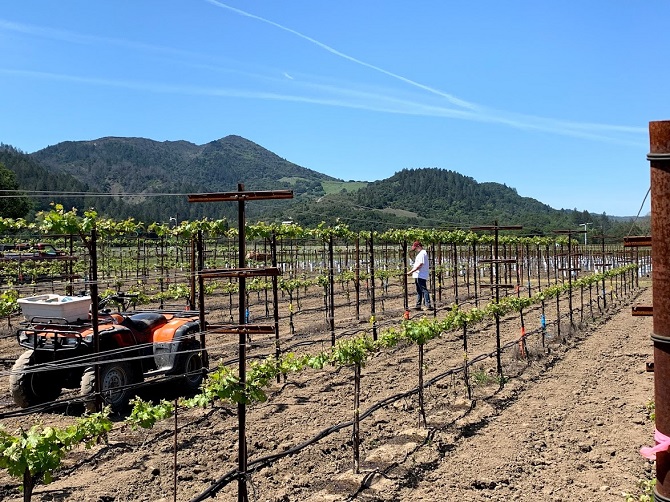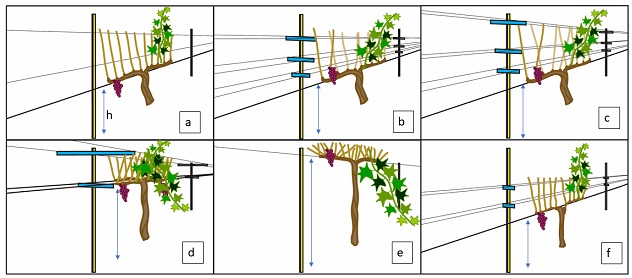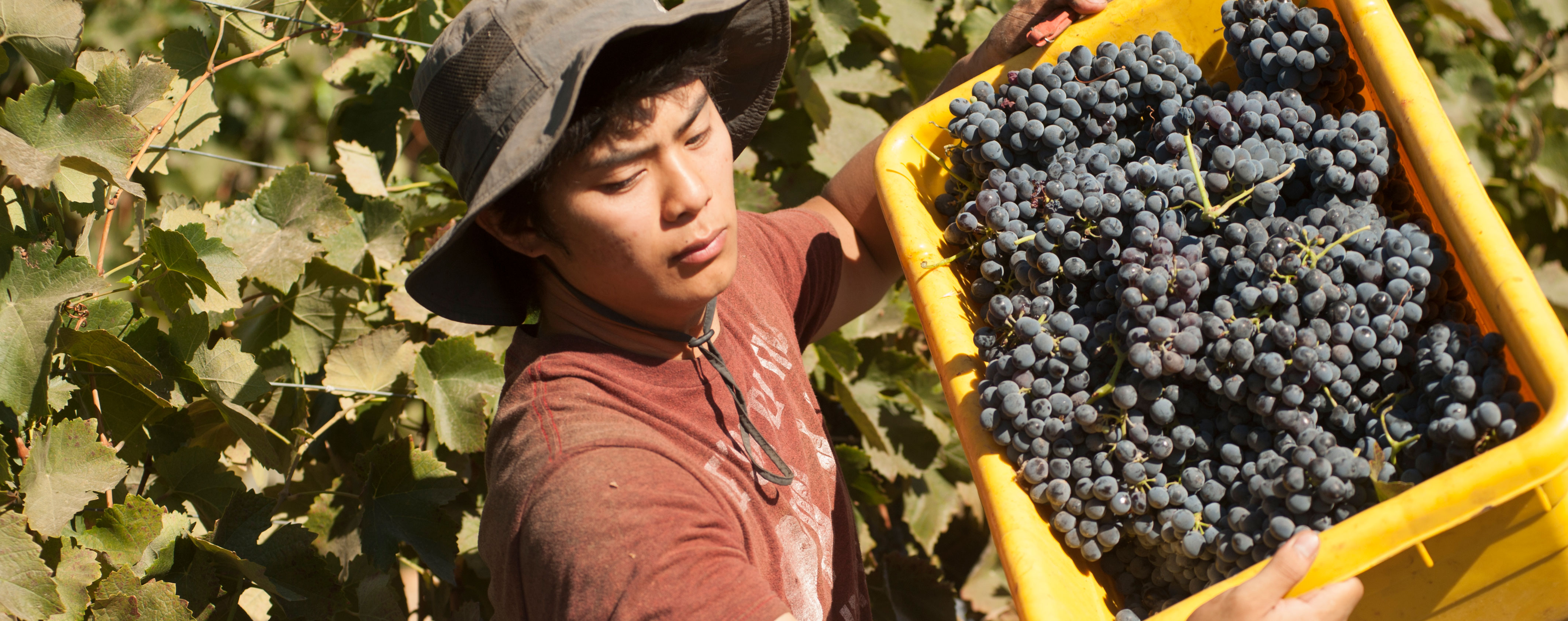Researchers at the University of California, Davis, have spent the last six years trying to find ways to solve this problem by examining different types of grapevine trellises and water amounts. Their new study, published in the journal Frontiers in Plant Science, finds that switching away from one of the most common and widely used trellis systems could alleviate the effects of extreme temperatures on cabernet (as well as other grapes).

This experimental vineyard at the UC Davis Oakville Research Station is testing different types of grapevine trellis systems to see which may work best to protect grapes from the extreme heat that comes with climate change. Those systems that are higher off the ground protect grapes and still maintain colour and quality, researchers found. (Photo: UC Davis)
Vertical shoot position (VSP) trellises are the traditional systems where vine shoots are trained to grow up in vertical, narrow rows with the fruit growing lower to the ground, allowing for greater exposure to sunlight. The study found these systems detrimental to grapes. During heatwaves, VSP trellis systems don't provide protection from solar radiation because the fruit is low to the ground and heat reflects from the ground into the canopy and clusters.
VSP trellises have a greater chance of yielding fewer grapes, with a higher likelihood of sunburnt berries and poor colour.
The study finds that single high-wire trellis systems instead allow vine leaves to shade the grapes. These trellises, which are about 5ft 6ins (1.67m) tall, also reduce direct solar radiation. The reduced sunlight does not affect the grapes’ colour or quality. The study showed almost twice the number of anthocyanins, which are chemicals in the plant that provide red grapes with their colour and protect against UV rays. The effect is like shade cloth, but more economical.
The study, which examined six different types of trellis systems and three different watering amounts, also found the VSP trellises required the most water.

Illustration of the six different types of wine grape trellis systems tested at UC Davis to protect grapes from heat. A to C are VSP systems grown traditionally. D is a high-quadrilateral trellis, E is a single high-wire trellis, and F is a Guyot-pruned vertical shoot position.
The study also found that growers get a more marketable yield for the amount of water they would have to apply with the single high-wire trellis systems.
Growers could also easily switch to these high-wire trellis systems without having to replant an entire vineyard. The conversion might take about 18 months.













.png)






